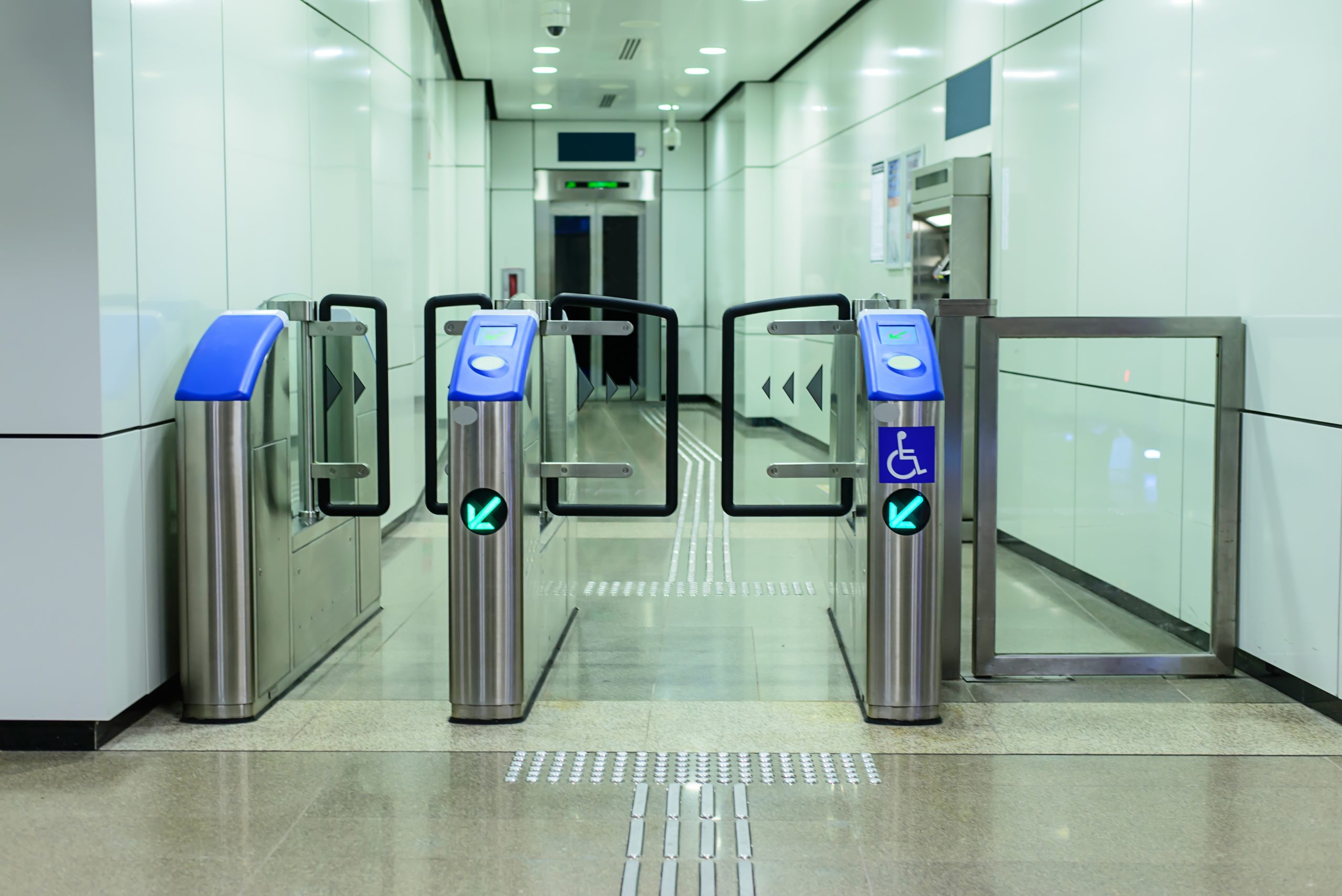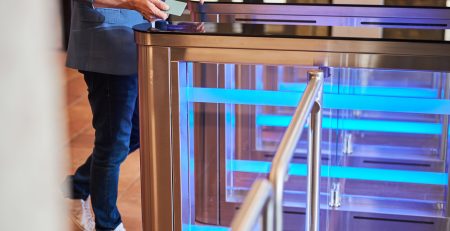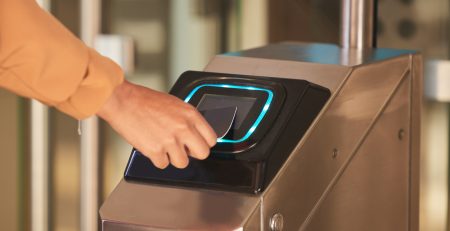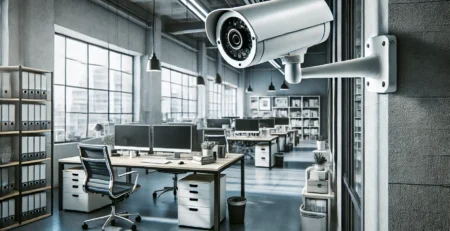PNE Turnstiles with Artificial Intelligence: Accessibility and Safety
To the PNE turnstiles with artificial intelligence are transforming the way we approach accessibility in public and private spaces. These turnstiles, designed to meet the needs of people with disabilities, use advanced technologies to ensure safe and comfortable access. In this article, we will explore what turnstiles with disabilities are, how artificial intelligence improves accessibility, and the benefits and challenges associated with these technologies.
What are PNE Turnstiles?
Turnstiles for people with disabilities are devices designed to ensure accessibility in public and private spaces. They are adapted to meet the needs of people with disabilities, providing a safer and more comfortable access experience. These turnstiles are often found in places such as airports, schools, shopping malls, and commercial buildings.
Importance of Accessibility
Accessibility is essential to ensure that all individuals, regardless of their physical abilities, can fully participate in society. This includes access to workplaces, schools, shopping malls, and other public spaces. PNE turnstiles play a crucial role in this context, facilitating the movement of people with reduced mobility.
How Artificial Intelligence Improves Accessibility
A artificial intelligence is revolutionizing the way PNE turnstiles operate. With AI, these devices can be equipped with sensors and algorithms that detect and respond to the specific needs of users. For example, turnstiles can be programmed to open automatically when they detect a person with a disability approaching, eliminating the need for manual interaction.
Technologies Used
AI-powered PNE turnstiles employ several advanced technologies, including:
- Motion Sensors: They detect the approach of users and activate the opening of the turnstile.
- Facial Recognition: They identify authorized users and allow access without the need for cards or keys.
- Bluetooth Communication: They allow integration with mobile devices to facilitate access.
Benefits of PNE Turnstiles with AI
PNE turnstiles with AI offer several significant benefits:
- Increased Accessibility: They facilitate access for people with disabilities, ensuring that everyone can move freely.
- Increased Security: They reduce the risk of accidents, as the turnstiles can detect and respond to emergency situations.
- Convenience: They eliminate the need for manual interaction, making the access process faster and more efficient.
Challenges and Limitations
While AI-powered PNE turnstiles are highly beneficial, there are some challenges and limitations to consider:
- Cost: Implementing AI technologies can be expensive, which can be a barrier for some organizations.
- Privacy: The use of facial recognition and other sensors may raise concerns about user privacy.
- Maintenance: The complexity of the technology may require regular maintenance to ensure proper functioning.
Success Stories
Several locations have already implemented AI-enabled PNE turnstiles with great success:
- Airports: International airports are using AI-enabled PNE turnstiles to improve accessibility and security.
- Schools: Schools are implementing these turnstiles to ensure that students with disabilities have equal access.
- Commercial Buildings: Commercial buildings are adopting these technologies to meet the needs of employees and visitors with disabilities.
Future of PNE Turnstiles
The future of AI-powered PNE turnstiles is promising. As the technology continues to evolve, we can expect:
- Integration with Other Technologies: Integration with other technologies, such as the Internet of Things (IoT), can further improve efficiency and security.
- Increased Adoption: Adoption of these technologies is expected to increase as more organizations recognize the benefits of accessibility and security.
- Continuous Innovations: Continuous research and development should lead to innovations that make PNE turnstiles even more effective and affordable.
Conclusion
To the PNE turnstiles with artificial intelligence are transforming the way we approach accessibility. With their advanced technologies and significant benefits, these devices are making the world more inclusive and safe for everyone. If you are looking to improve accessibility in your organization, consider investing in AI-powered turnstiles. To ensure your location is accessible and safe, contact C2H Solutions. Our dedicated team can help implement customized access control solutions to meet your needs. To receive a quote, simply get in touch via the contact page on our website.
Frequently Asked Questions and Answers
- What are PNE turnstiles?
- PNE turnstiles are devices designed to ensure accessibility in public and private places, adapted to meet the needs of people with disabilities.
- How does AI improve accessibility?
- AI allows turnstiles to be equipped with sensors and algorithms that detect and respond to specific user needs, facilitating access.
- What technologies are used?
- Motion sensors, facial recognition and Bluetooth communication are some of the technologies used.
- What are the benefits of PNE turnstiles with AI?
- Increased accessibility, increased security and convenience are some of the key benefits.
- What are the challenges and limitations?
- Cost, privacy and maintenance are some of the challenges and limitations associated with AI-enabled PNE turnstiles.
- What are the success stories?
- Airports, schools and commercial buildings have already implemented AI-enabled PNE turnstiles with great success.
- What is the future of PNE turnstiles?
- The future includes integration with other technologies, increased adoption, and continued innovation.
- How can I implement PNE turnstiles in my organization?
- Contact C2H Solutions to receive a quote and implement custom access control solutions.
- What are the costs associated with implementation?
- Costs vary depending on the complexity of the implementation and the technologies used.
- How can I ensure the privacy of users?
- Implement strict privacy policies and ensure data is protected in accordance with applicable regulations.












Comments (14)
💡 As Catracas PNE com Inteligência Artificial não apenas garantem acessibilidade, mas também elevam a segurança em nossos ambientes. É incrível como a tecnologia pode transformar a experiência de todos! 👉 Quer aprofundar seus conhecimentos sobre #Controle de Acesso? Explore mais conteúdos exclusivos em nosso blog na seção #Controle de Acesso. 🤝 Envie um email para nosso departamento comercial! comercial@c2hsolutions.com.br
💡 A introdução de Catracas PNE com Inteligência Artificial é um passo fundamental para garantir acessibilidade e segurança para todos! A tecnologia está transformando a forma como pensamos em inclusão no controle de acesso.
👉 Quer aprofundar seus conhecimentos sobre #Controle de Acesso?
Explore mais conteúdos exclusivos em nosso blog na seção #Controle de Acesso.
🤝 Envie um email para nosso departamento comercial! comercial@c2hsolutions.com.br
💡 A integração de Inteligência Artificial nas catracas PNE é um passo incrível para garantir acessibilidade e segurança para todos! Essa inovação não apenas transforma a experiência do usuário, mas também promove um ambiente mais inclusivo.
👉 Quer aprofundar seus conhecimentos sobre #Controle de Acesso?
Explore mais conteúdos exclusivos em nosso blog na seção #Controle de Acesso.
🤝 Envie um email para nosso departamento comercial! comercial@c2hsolutions.com.br
💡 As catracas PNE com inteligência artificial são um grande avanço em acessibilidade, garantindo que todos tenham segurança e liberdade de movimento em espaços públicos. Essa inovação promove inclusão e fortalece a responsabilidade social das empresas!
👉 Quer aprofundar seus conhecimentos sobre #Controle de Acesso? Explore mais conteúdos exclusivos em nosso blog na seção #Controle de Acesso.
🤝 Envie um email para nosso departamento comercial! comercial@c2hsolutions.com.br
💡 As Catracas PNE com Inteligência Artificial não apenas melhoram a acessibilidade, mas também garantem a segurança de todos, promovendo um ambiente mais inclusivo. Invista em tecnologia que faz a diferença!
👉 Quer aprofundar seus conhecimentos sobre #Controle de Acesso? Explore mais conteúdos exclusivos em nosso blog na seção #Controle de Acesso.
🤝 Envie um email para nosso departamento comercial! comercial@c2hsolutions.com.br
💡 A implementação de catracas PNE com inteligência artificial não só eleva a acessibilidade, mas também garante um controle de acesso mais seguro e eficiente. É uma revolução que beneficia a todos! 🌟
👉 Quer aprofundar seus conhecimentos sobre #Controle de Acesso? Explore mais conteúdos exclusivos em nosso blog na seção #Controle de Acesso.
🤝 Envie um email para nosso departamento comercial! comercial@c2hsolutions.com.br
💡 A integração da Inteligência Artificial nas catracas PNE é um passo significativo para garantir acessibilidade e segurança a todos. Essas inovações não só facilitam o acesso, mas também proporcionam um ambiente mais inclusivo e seguro.
👉 Quer aprofundar seus conhecimentos sobre #Controle de Acesso? Explore mais conteúdos exclusivos em nosso blog na seção #Controle de Acesso.
🤝 Envie um email para nosso departamento comercial! comercial@c2hsolutions.com.br
💡 A implementação de Catracas PNE com Inteligência Artificial não só transforma a acessibilidade, mas também eleva os padrões de segurança em ambientes públicos. É um passo importante para incluir a todos de forma eficaz!
👉 Quer aprofundar seus conhecimentos sobre #Controle de Acesso?
Explore mais conteúdos exclusivos em nosso blog na seção #Controle de Acesso.
🤝 Envie um email para nosso departamento comercial! comercial@c2hsolutions.com.br
💡 A integração da inteligência artificial nas catracas PNE é um avanço notável que não só melhora a acessibilidade, mas também garante maior segurança para todos. É incrível ver como a tecnologia pode transformar a experiência de usuários com necessidades especiais!
👉 Quer aprofundar seus conhecimentos sobre #Controle de Acesso? Explore mais conteúdos exclusivos em nosso blog na seção #Controle de Acesso.
🤝 Envie um email para nosso departamento comercial! comercial@c2hsolutions.com.br
💡 A integração da Inteligência Artificial nas catracas PNE não apenas melhora a acessibilidade, mas também garante maior segurança para todos. É uma inovação que transforma o conceito de controle de acesso!
👉 Quer aprofundar seus conhecimentos sobre #Controle de Acesso? Explore mais conteúdos exclusivos em nosso blog na seção #Controle de Acesso.
🤝 Envie um email para nosso departamento comercial! comercial@c2hsolutions.com.br
#Controle de AcessoCatracas PNE com Inteligência Artificial: Acessibilidade e Segurança#Controle de AcessoSegurança com Inovação e Confiabilidade – C2H Solutions
#Controle de AcessoCatracas PNE com Inteligência Artificial: Acessibilidade e Segurança#Controle de AcessoSegurança com Inovação e Confiabilidade – C2H Solutions
#Controle de AcessoCatracas PNE com Inteligência Artificial: Acessibilidade e Segurança#Controle de AcessoSegurança com Inovação e Confiabilidade – C2H Solutions
#Controle de AcessoCatracas PNE com Inteligência Artificial: Acessibilidade e Segurança#Controle de AcessoSegurança com Inovação e Confiabilidade – C2H Solutions